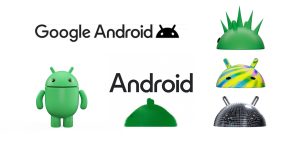
Entry-level prepaid Android phones sell for as low as $50.
Last year, the iPhone was the best-selling smartphone in the world, and Apple re-captured the crown for top smartphone maker in the United States last quarter with an estimated one-fifth of the market. While the original arrived at $499 (remember Ballmer’s reaction?), Apple would not hit the ground running until switching to the subsidized model with the second-generation iPhone 3G. Nowadays, U.S. carriers subsidize the full price of the device with an estimated $400, so those willing to commit to a two-year contract end up paying just $199 upfront for the hardware.
The trick worked and the iPhone went on the become an iconic device, but sales numbers did not replicate in various Southern European countries where carriers steer away from paying billions in upfront subsidies. As a result, prepaid Android phones are now undercutting Apple’s device and selling like crazy. Take Portugal or Greece, for example, where the iPhone last quarter accounted for 9 percent and 5 percent of all smartphones sold, respectively, according to the Wall Street Journal.
In the U.S., where contract plans and phone subsidies dominate, IDC says that around 90% of smartphone shipments over the past four years were for devices that cost more than $300 — despite the recession and uncertain recovery. In Italy, where prepaid plans dominate, that proportion was 67% last year, and in crisis-hit Greece and Portugal, only about 40% of the smartphones shipped in 2011 cost more than $300.
The article author Anton Troianovski said some European carriers are considering eliminating subsidies in favor of the more affordable pay-as-you-go plans. This includes major carriers, such as Spain’s Telefónica SA and Denmark’s Telenor ASA.

The price matrix of the unlocked, contract-free iPhone 4S.
The unlocked iPhone 4S starts at $649 and goes all the way up to $849 for the flagship 64GB model while its predecessor, the iPhone 4, costs $549 without any subsidies. Now, compare this to a $70 contract-free ZTE X500 or Samsung’s Galaxy Mini that sells for $188. True, these are not what you would call high-end devices, but the same goes for the 8GB iPhone 3GS that retails in the U.S. for $375 without any subsidies. That is a steep price for a 32-month old phone at a time when more and more low-cost prepaid Android devices announce. For comparison, the ZTE device packs in a 3.5-inch display, a 3.2-megapixel camera, 4GB of storage and runs Android 2.3, Gingerbread.
This is not to say Apple should worry about sub-$100 Android phones that compromise on features, but there is clearly a notable gap between Apple’s larger share of the subsidized smartphone market versus non-subsidized territories. Apple is a high-end play, but the Android carpet-bombing is taking its toll in sheer number of device activations. With that said, it would be prudent of Apple to consider discounting at least entry-level contract-free iPhones. Surely, the company’s high margins leave plenty of maneuvering space to put iPhones within budget shoppers’ reach.
Related articles
- Verizon admits that the majority of the smartphones it sold last quarter were 3G iPhones (9to5mac.com)
- WSJ: Volume commitments, carrier junkware blamed for lack of iPhone deal with Japan’s NTTDoCoMo (9to5mac.com)
- Apple is turning out millions of iPhone 3GS and iPhone 4 CDMAs ahead of the holidays (9to5mac.com)
- Pressure mounts to deliver inexpensive iPhone as Apple stagnates in countries without carrier subsidies (9to5mac.com)
FTC: We use income earning auto affiliate links. More.


Comments